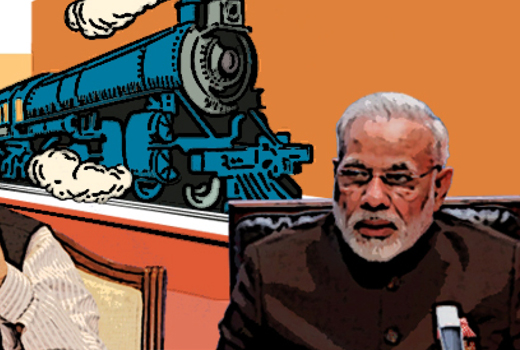Change Bureaucracy Change India
Change Bureaucracy Change India
Mangalore Today News Network
By Dr. G ShreeKumar Menon
Mangaluru, June 13, 2018: In its penultimate lap before its term expires the Modi government has announced a bold initiative of “lateral entry” into the well insulated bureaucracy. 10 posts of Joint Secretaries in different ministries have been identified for this unique experiment. The well advertised exercise aims to induct “talented and motivated” candidates with expertise in the areas of revenue, financial services, economic affairs, agriculture, cooperation and farmer’s welfare, road transport and highway, shipping, environment, forests and climate change, new and renewable energy, civil aviation and commerce, at the level of Joint Secretary. The post of Joint Secretary is at the senior management level in the government of India and is associated with policy making as well as implementation of various programmes and schemes. These posts are routinely filled from the cadres of the IAS, few from the IPS and Allied Services. Over a period of time it has degenerated into a system where disgruntled officers in different State cadres seek refuge from hostile State governments usually on the ground of political affinities. Like migratory birds, when the climate is unfavourable in the State, officers migrate on ‘Central deputation’ and once the climate becomes congenial they return back to the State, using the pompous term “reverting to State cadre”. Officers without proper aptitude, knowledge, experience and efficiency would breeze into the Ministry of their choice based on appropriate recommendations by near and dear political masters. Predictably, the entire administration was crippled in various ways, destabilizing or simply slowing down various programs, schemes and initiatives. Successive governments avoided the repeated pleas by experts to revamp the bureaucracy.

The Hindu Business Line, dated March 13th 2017 reports that the former Finance Minister Shri.P.Chidambaram states that the country needs to re-imagine and reinvent its administrative machinery as its capacity to deliver has diminished. He felt some radical measures were needed to transform the bureaucracy in order to improve the outcomes as India was dealing with multiple transitions. “I think the only way we can reinvent the bureaucracy is to allow the non-performers to leave the civil service when they reach the age of 40,” he said, responding to questions during a lecture on “Will India get uninterrupted economic growth?” organized by The Hindu Centre for Politics and Public Policy. “Because at that age, a non-performing civil servant can find another career and another job, and allow the lateral entry for performers to enter at the age of 40,” he added.
He also said that though it was natural for older people to occupy higher positions, many of them were simply incapable of delivering. Citing examples, he said the government machinery’s capacity to deliver was limited and hence there was a need to re-imagine and reinvent the bureaucracy.
The New York Times had this to say about our bureaucracy “Today, Indians believe that their bureaucracy has become a prime obstacle to development, blocking instead of shepherding economic reforms. They think of bureaucrats as self-serving, obstructive, and corrupt, protected by labor laws and lifetime contracts that render them completely unaccountable. To be sure, there are examples of good performance - the building of the Delhi Metro or the expansion of the national highway system -- but these only underscore how often most of the bureaucracy fails. To make matters worse, the term of any one civil servant in a particular job is getting shorter, thanks to an increase in capricious transfers. Prime Minister Singh has instituted a new appraisal system for the top bureaucracy, but it has not done much.
The Indian bureaucracy is a haven of mental power. It still attracts many of the brightest students in the country, who are admitted on the basis of a difficult exam. But despite their very high IQs, most bureaucrats fail as managers. One of the reasons is the bureaucracy’s perverse incentive system; another is poor training in implementation. Indians tend to blame ideology or democracy for their failures, but the real problem is that they value ideas over accomplishment. Great strides are being made on the Delhi Metro not because the project was brilliantly conceived but because its leader sets clear, measurable goals, monitors day-to-day progress, and persistently removes obstacles. Most Indian politicians and civil servants, in contrast, fail to plan their projects well, monitor them, or follow through on them: their performance failures mostly have to do with poor execution. (New York Times – Foreign Affairs Magazine: The India Model, July 18th 2006.)
We need to understand that the government at the helm of affairs, whether at the State or Centre, has only one delivery mechanism at its disposal – the bureaucracy. If this delivery mechanism fails, whether intended or unintended, the reigning political party has to pay the consequences in the general elections. The non performing bureaucrat has to face no such test every five years. He faces only one test at the entry level, thereafter the show goes uninterrupted, till he retires, with innumerable promotions, deputations, salary increments and free foreign jaunts thrown in between. A crafty bureaucrat can cripple a policy decision by sheer procrastination or creating a situation for judicial intervention, thereby rendering that policy redundant forever. Though politicians are aware of this manifest weakness, there has been no serious attempt to revamp the bureaucracy. Some half hearted measures were introduced but they did not sustain due to the vicissitudes of political changes.
I am skeptical about the success of this latest experiment at the Joint Secretary level, being sought to be done by the Modi government. The induction of lateral level aspirants ought to have been done at the Secretary level. A Joint Secretary will have to function below the Additional Secretary and the Secretary, who will invariably be from the IAS, and who will ensure that his brightness is dimmed appropriately. The atmosphere within the bureaucracy is extremely vitiated because of inter service rivalry, and naked discrimination being practiced by the IAS lobby against all other services. The lateral entry aspirants are also sure to be crippled by the IAS lobby. According to the Seventh Central Pay Commission of India, IAS officers hold 249 out of 341 positions of Joint Secretary in the Government of India. What can 10 outsiders do in this crowd? Over the past few decades the IAS lobby has devised procedures, rules, permissions that will ensure their hegemony in the bureaucracy. Ultimately the story of 10 outsiders is going to be touted as a failed experiment.
A bureaucratic revamp ought to have been done from A to Z, right from recruitment to retirement. Instead, a half hearted measure is being thrust upon a recalcitrant system that is bound to repulse it without any qualms.
 About the author: Dr G ShreeKumar Menon, IRS (Rtd) Ph.D (Narcotics) is a Former Director General, National Academy of Customs Excise and Narcotics & Multi Disciplinary School of Economic Intelligence; Fellow, James Martin Center for Non Proliferation Studies, USA; Public Administration, Maxwell School of Public Administration, Syracuse University, USA and AOTS Scholar, Japan. He presently serves as Registrar, Yenepoya University, Mangalore – 575018. He may be reached at shreemenon48@gmail.com
About the author: Dr G ShreeKumar Menon, IRS (Rtd) Ph.D (Narcotics) is a Former Director General, National Academy of Customs Excise and Narcotics & Multi Disciplinary School of Economic Intelligence; Fellow, James Martin Center for Non Proliferation Studies, USA; Public Administration, Maxwell School of Public Administration, Syracuse University, USA and AOTS Scholar, Japan. He presently serves as Registrar, Yenepoya University, Mangalore – 575018. He may be reached at shreemenon48@gmail.com
- Poll promises can become political nightmares
- While India sticks to death by hanging other execution methods vary across the world
- Spiking of drinks, a grave threat for students’ security
- Burden of drugs and substance use among university students in India
- Mangalore medic’s miracle in Bombay 1957
- Needed a national protocol for treatment of substance use disorders
- The Lingering Menace of Drug Abuse Among the Indian Youth—It’s Time for Action
- Need For ‘Students, Alcohol and Drugs’ survey
- New Synthetic Drugs Trapping Youth
- Mood Modifying Chips - Future of Drug Use
- Ramping up Indo-Bangla border security
- IITM- A premier educational Institution in a forest. What can we learn?
- Former PM, Manmohan Singh: Notable laws passed under his tenure
- Kashmir Bhavan in Bengaluru: A must visit place
- "MAI and I" Book of Angelic Emotions
- Draupadi Murmu - The New ’President of India’
- Anthony Ashram in the city grows a classic museum
- First College of Fisheries in India - A Golden Jubilarian
- Flushing Meadows - A Vintage Mansion
- The Colonel�s Bequest
- A Mangalorean PM and his RBI Governor Brother: The Extraordinary story of the Benegal Brothers
- There is no higher religion than Truth: Theosophical Society
- L�affaire - Ashu & Yiju of Mangalore
- Mangalore in Kowloon
- 1568 to 2018 AD: 450 years of Christianity in Mangaluru
- Vice President elect Naidu moves on from nadir to zenith, the phenomenal journey
- Embracing the Outdoors: How Heated Jackets Are Revolutionizing Cold Weather Activities
- Efficient and Sustainable Packaging Solutions with FIBCs
- The Hybrid Kilt Revolution | Where Tradition Gets Trendy
- Affordable Elegance | Embrace Style on a Budget with Cheap Kilts
- Unleashing Style and Functionality | Exploring Tactical Kilts
- Mangalore’s Heroic Lady marks 105th Birthday
- Santa the Christmas spirit
- Geriatric care: Mangalore strikes a fine balance
- The Don Who Made Two Empires to Clash
- CHITRAPUR SARASWATS - A Great Kanara Community
- Our new President Ram Nath Kovind’s significant journey to Rashtrapathi Bhavan
- Marriages made in heaven, big fat weddings made in India
- Eid insight - The giver of glad tidings
- CITY INFORMATION
- TRAVEL
- TOURIST INFORMATION
- HEALTH CARE
- MISCELLANEOUS




 Write Comment
Write Comment E-Mail To a Friend
E-Mail To a Friend Facebook
Facebook Twitter
Twitter  Print
Print 

